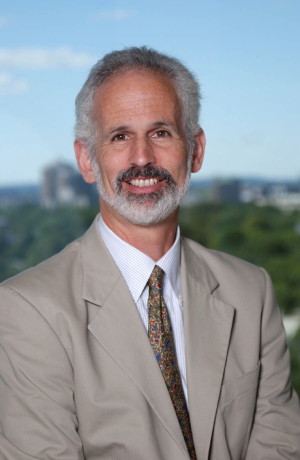Paul Levy, the blogging CEO at Boston’s Beth Israel Deaconess Medical Center, has staked his – and his hospital’s – reputation on a culture of transparency. Although no doubt partly driven by Paul’s ethical compass, he must also hope that his unique brand of openness will be good for business.
But will it be?
An article in last week’s Boston Globe left me unsure. In it, reporter Patricia Wen describes Levy’s culture of openness (which has included a unilateral decision to lay bare data on hospital-acquired infections – making him the skunk in the room at Boston hospital CEO cocktail parties – and rapid and forthright mea culpas after serious errors), juxtaposing it against several recent reports of high profile mistakes and tragedies at BI-D, including a wrong-site surgery case and the death of a young woman during childbirth. Although the article raises the possibility that Levy’s openness is enhancing safety, I think most readers will come away with the impression that these high profile errors illustrate that Beth Israel might well be riskier than other hospitals.
I can’t prove it, but my guess is that this impression would be dead wrong. Knowing about the groundbreaking work BI-Deaconess has done in simulation, teamwork training, quality improvement, patient-centeredness, developing one of the nation’s first procedure services and a high quality hospitalist program, and educating trainees in quality and safety science – as well as knowing what I know about the strength of the faculty and housestaff – I find it nearly inconceivable that the hospital is less safe than the average facility, and likely that it’s safer. Plus they have a boffo information technology system, led by their indefatigable (and blogging) CIO, Dr. John Halamka.
The problem, as usual, boils down to the core challenge of measuring patient safety. Until we can figure out how to determine whether a hospital is safe using standardized data and definitions, we remain dependent on self-reports of errors. So a hospital that has convinced its nurses and docs to fess up to mistakes and chosen to be open about these errors to promote organizational change may appear to be riskier than others with fewer reports, while actually being far safer. This is how a hospital like BI-D, which is doing all of these things to an unprecedented degree, can look like an Error Hot-Spot to the media and public while possibly being the safest show in town.
Is this fair? Of course not. Is it predictable? Absolutely. What should we do about it? We must educate the media about this fact: if you are not hearing about serious errors from other hospitals, trust me – it is because you’re not hearing about them, not because they’re not happening. This is a case in which the obvious (I just heard about another bad error from Hospital A – it must be less safe than Hospital B) might well be dead wrong.
 As Levy concludes in his blog posting today,
As Levy concludes in his blog posting today,
…in today’s electronic environment, it is virtually impossible to keep data ‘private’ if it is sufficiently distributed to the hospital’s staff. So, if you don’t want the public to know, don’t even tell your own people!
If media coverage convinces the Paul Levys of the world that the better, safer course is to play the old game of “hide the ball” – or convinces hospital boards that they shouldn’t hire CEOs who favor transparency – then this type of reportorial error will cost lives, just as surely as medical errors do.


Hi Bob. Great topic.
We published a presentation on “Pay For Performance” by Rod Hayward from the Ann Arbor VA, in which we asked a series of questions of physicians. One question was whether physicians would proactively disclose their own performance data rather than having an external body disclose what they believe to be measures of physician performance. More than 70% said yes.
This issue has layers of, well, issues. First, no physician seems to trust that data from external (or even internal) sources are valid, benchmark-able measures of their performance. So it makes sense that physicians would rather show data that they believe represents their performance. Easier said than done, and possibly all talk, but it’s at least an indication of physicians’ understanding that public performance data is probably here to stay.
The second issue is the problem of success and failure in healthcare. For many reasons, when a hospital or doctor is “perfect” (according to some metric), no one really cares, or it’s perceived that they are as good as people expect doctors and hospitals to be–perfect, every time. But when a metric looks bad, it is a lightening rod. Healthcare failures make great copy, and no one really wants the context beyond the headline.
When we launched the National Patient Safety Agency for the NHS in England, a major tenet of the communication strategy was to aggressively educate the wide range of NHS “stakeholders” about risk–what it is, where it exists, what can and can’t be done about it, what choices people have around it, and so on. In order to understand safety, you must first understand all the dimensions of risk. Given that risk is in the eye of the beholder, people who are well educated on risk can then be accepted as good stewards of safety.
“A man’s perception is the measure of all things, of things that are that are, and of things that are not that are not.”
So until the consumers of performance information (media, patients, payers, attorneys, legislators/regulators, etc.) care enough to “understand” risk and the data they are looking at before drawing conclusions or making decisions, it seems to me that Paul Levy’s noble commitment to transparency is very risky business.
Thanks again for your never-dull topics.